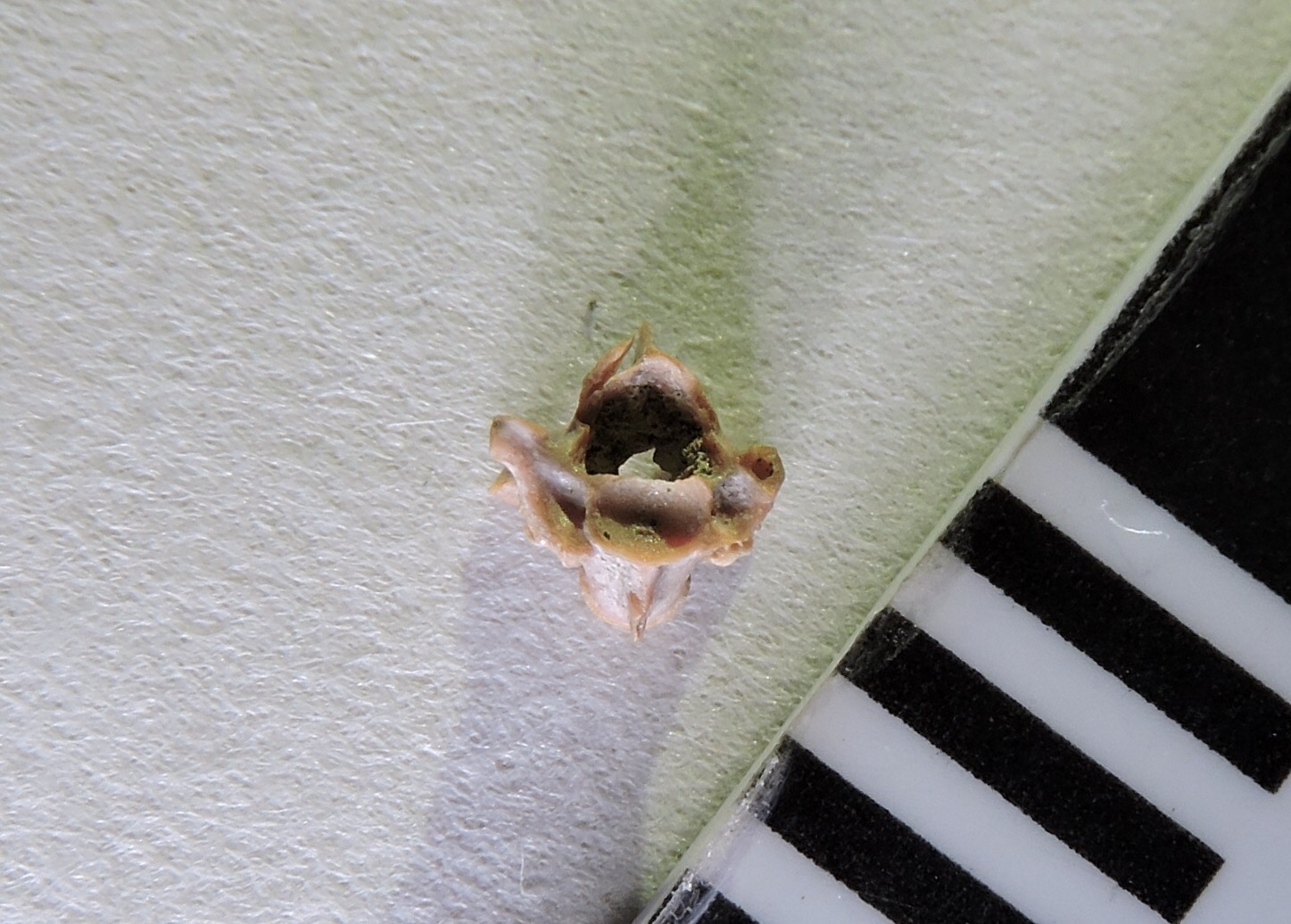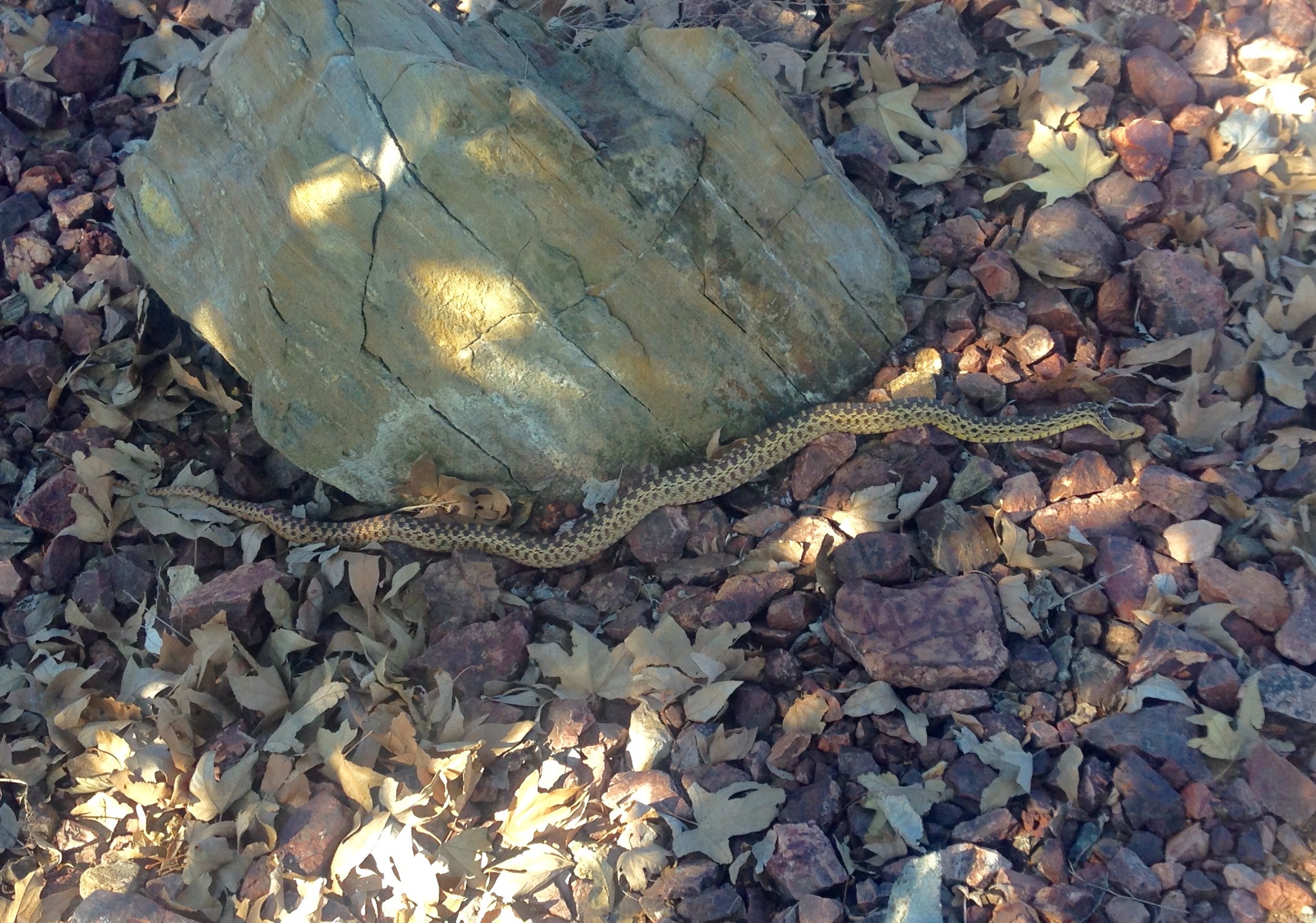 In recognition of World Snake Day (which was yesterday), for today's Fossil Friday we have a Pleistocene snake from Diamond Valley Lake.Reptiles are common in Southern California today, and the same was true during the Pleistocene, including turtles, lizards, and snakes. While rattlesnakes may get more attention, the most diverse and widespread group of snakes are the family Colubridae; in fact, more than half of the extant snake species are colubrids. With such a common group, it's not surprising that their vertebrae turn up fairly commonly as fossils.At the top of the page is a dorsal vertebra, from the region that makes up the bulk of a snake's body. The vertebra itself is about 3 millimeters across at the widest point, but in the living snake a rib would have been attached to each side. It's shown here in close to anterior view, but slightly below and to the right. Like other snakes this vertebra is procoelous, meaning that it articulates with other vertebrae in part through ball-and-socket joints. The socket on the front of the vertebra is visible here; there's a corresponding ball joint on the other end of the vertebra.Colubrids are still diverse in Southern California, and include such diverse forms as king snakes, garter snakes, and gopher snakes (such as Pituophis catanifer, below, photographed on the museum campus). With such a range of closely-related species to choose from, so far we can only say that this vertebra represents some type of colubrid.
In recognition of World Snake Day (which was yesterday), for today's Fossil Friday we have a Pleistocene snake from Diamond Valley Lake.Reptiles are common in Southern California today, and the same was true during the Pleistocene, including turtles, lizards, and snakes. While rattlesnakes may get more attention, the most diverse and widespread group of snakes are the family Colubridae; in fact, more than half of the extant snake species are colubrids. With such a common group, it's not surprising that their vertebrae turn up fairly commonly as fossils.At the top of the page is a dorsal vertebra, from the region that makes up the bulk of a snake's body. The vertebra itself is about 3 millimeters across at the widest point, but in the living snake a rib would have been attached to each side. It's shown here in close to anterior view, but slightly below and to the right. Like other snakes this vertebra is procoelous, meaning that it articulates with other vertebrae in part through ball-and-socket joints. The socket on the front of the vertebra is visible here; there's a corresponding ball joint on the other end of the vertebra.Colubrids are still diverse in Southern California, and include such diverse forms as king snakes, garter snakes, and gopher snakes (such as Pituophis catanifer, below, photographed on the museum campus). With such a range of closely-related species to choose from, so far we can only say that this vertebra represents some type of colubrid.
